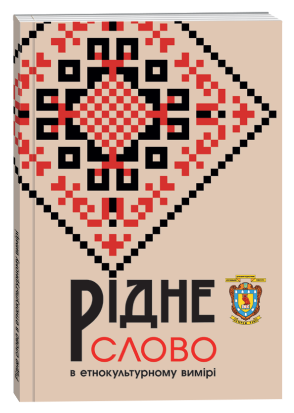«A MY TUIU CHERVONU KALYNU PIDIYMEMO» («BUT WE WIIL RAISE THAT GUELDER ROSE UP») (SEMANTIC AND STYLISTIC POTENTIAL OF LEXEMES-DEDRONYMS IN FOLKLORIZED SONG DISCOURSES)
DOI:
https://doi.org/10.24919/2411-4758.2022.250919Keywords:
folklorized song discourse, symbol, phytonomen, language thinking, ethnic consciousness, associate, context.Abstract
The article is devoted to the study of fl orolexemes as expressive dominant signs of folklorized song discourses, which attest the syncretism of the author’s and folk-poetic world-reception. It is noted that, when entering a folk song tradition, songs of literary origin are transformed and adapted to the poetic matrices of folklore texts, although they retain specifi c aspects of the author’s individualized language thinking: in folklore kalyna (guelder rose), yavir (sycamore), dub (oak), verba (willow), cheremshyna (hagberry), bereza (birch) are usually a component of psychological parallelism, while in the author’s song texts they are periphrases of the author’s inner world, and in texts with actualized civic and patriotic motives – iconic explicants of Ukrainian ethnic consciousness. The author carried out a comprehensive linguistic-poetic research into specifi c fl orolexems; proved that kalyna is one of the most frequent dendronomes that combine folk and authorial traditions. The momentous symboleme personifi es Ukraine mentally and receptively, and in the texts of rifl emen’s and insurgent songs it is associated with undefeated fi ght, struggle for independence, sacrifi ce, and is also a national symbol of unity and mourning for the fallen heroes. In the author’s discourses, primarily rifl emen’s and insurgen t, the semantic-symbolic content of the phytonomen yavir (yavoryna) correlates with folklore; the symbolic potential of the folk song image (longing, insightful explication of emotional experiences) is explicated in Dmytro Pavlychko’s poem “Yavir i yavoryna”. Florolexeme dub belongs to ethnic phytonyms with the semantics of expressive cultural-historical and socio-ideological content via actualizing the semes “Ukrainian, patriotic”. It is noted that in the context of rifl emen’s and insurgent song language formation the phytonomen dub intensifi es ideological-political and axiological connotations. It is postulated that the image of verba has become so popular due to actualizing the semes of positive evaluation and expressive national connotation. The phytocenoses of hai, lis, bir are studied through the prism of textual energy (reception at the level of unconscious impulses and genetic codes).
References
Дей, О. І. (1978). Поетика української народної пісні. Київ : Наукова думка.
Дем’ян, Г. (2002). Українські повстанські пісні 1940 – 2000 років (історико-фольклористичне дослідження). Київ; Львів.
Дмитренко, М. (2011). Символи українського фольклору: монографія. Київ : УЦКД.
Коломієць, І. І. (2003). Флоролексеми в українській поезії ІІ половини ХХ століття: функціонально-стилістичний аспект (Автореф. дис.... канд. філол. наук). Київ. нац. ун-т ім. Т.Шевченка. Київ.
Кононенко, В. (2001). Рідне слово. Київ : Богдана.
Кузьменко, О. (2005). Стрілецькі пісні як феномен пісенної культури українців. Стрілецькі пісні / упоряд., запис, вступ. ст., комент. та додат. О. М. Кузьменко, 9 – 33. Львів : Інститут народознавства НАН України.
Лановик, М. & Лановик, З. (2001). Українська усна народна творчість : підручник, 382 – 396. Київ : Знання-Прес.
Новосад, М. Г. (2000). Українська народна пісня в літературній творчості І. Франка. Вісник Прикарпатського університету. Мистецтвознавство, 2, 90 – 98. Івано-Франківськ.
Нудьга, Г. (1989). Українська пісня в світі : дослідження. Київ : Муз. Україна.
Погребенник, Ф. (1991). Наша дума, наша пісня : нариси-дослідження. Київ : Муз. Україна.
Скуратівський, В. (1998). Берегиня. Київ : Вид-во ім. О. Теліги.
Стецик М. С. & Ціздин О. Ю. (2020). Поетика пісень літературного походження. Актуальні проблеми лінгводидактики в сучасному освітньому середовищі: Матеріали Всеукраїнської науково-практичної інтернет-конференції (з міжнародною участю) / за заг. ред. Г.І. Дідук-Ступ’як, Т.М. Миколенко, М.В. Пігур, 220 – 223. Тернопіль : Вектор.
Франко, І. (1980). Як виникають народні пісні. Зібр. творів: у 50 т. 27, 57 – 65. Київ.
Шалата, М. (2017). Зброя і пісня / Співаник УПА. Редактор, автор вступ. статті та коментарів М. Шалата, 5 – 30. Дрогобич : Коло.







